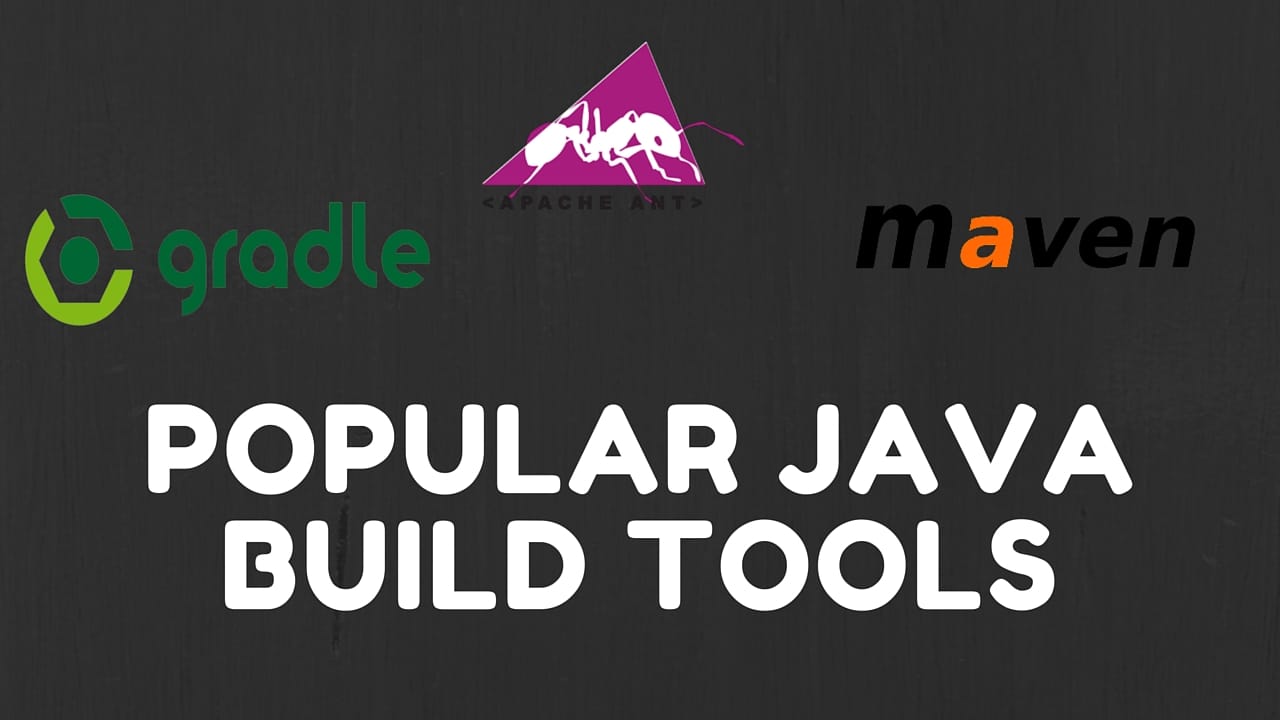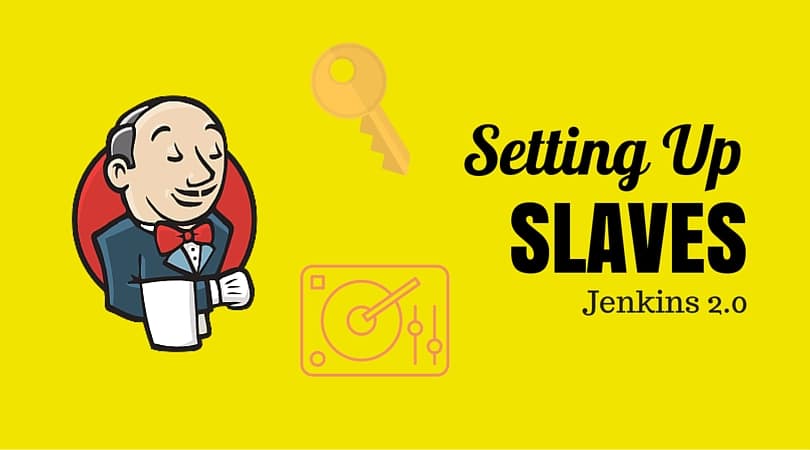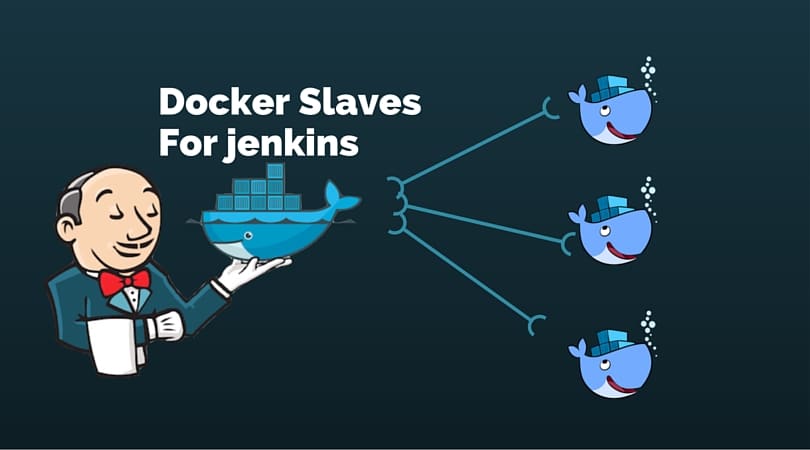Maven is a
popular open source build tool for enterprise Java projects, designed to take
much of the hard work out of the build process. Maven uses a declarative
approach, where the project structure and contents are described, rather then
the task-based approach used in Ant or in traditional make files, for example.
This helps enforce company-wide development standards and reduces the time
needed to write and maintain build scripts.
The declarative,
lifecycle-based approach used by Maven 1 is, for many, a radical departure from
more traditional build techniques, and Maven 2 goes even further in this
regard. In this article, I go through some of the basic principals behind Maven
2 and then step through a working example. Let's start by reviewing the
fundamentals of Maven 2.
The project
object model
The heart of a
Maven 2 project is the project object model (or POM for short). It contains a
detailed description of your project, including information about versioning
and configuration management, dependencies, application and testing resources,
team members and structure, and much more. The POM takes the form of an XML
file ( pom.xml ), which is placed in your project home directory. A simple
pom.xml file is shown here:
<project
xmlns="http://maven.apache.org/POM/4.0.0"
xmlns:xsi="http://www.w3.org/2001/XMLSchema-instance"
xsi:schemaLocation="http://maven.apache.org/POM/4.0.0
http://maven.apache.org/maven-v4_0_0.xsd">
<modelVersion>4.0.0</modelVersion>
<groupId>com.javaworld.hotels</groupId>
<artifactId>HotelDatabase</artifactId>
<packaging>war</packaging>
<version>1.0-SNAPSHOT</version>
<name>Maven Quick Start Archetype</name>
<url>http://maven.apache.org</url>
<dependencies>
<dependency>
<groupId>junit</groupId>
<artifactId>junit</artifactId>
<version>3.8.1</version>
<scope>test</scope>
</dependency>
</dependencies>
</project>
The Maven 2 directory structure
Much of Maven's power comes from the
standard practices it encourages. A developer who has previously worked on a
Maven project will immediately feel familiar with the structure and
organization of a new one. Time need not be wasted reinventing directory
structures, conventions, and customized Ant build scripts for each project.
Although you can override any particular directory location for your own
specific ends, you really should respect the standard Maven 2 directory
structure as much as possible, for several reasons:
It makes your POM file smaller and simpler
It makes the project easier to understand and makes life easier for the
poor guy who must maintain the project when you leave
It makes it easier to integrate plug-ins
The standard Maven 2 directory structure is
illustrated in Figure 1. In the project home directory goes the POM (pom.xml)
and two subdirectories: src for all source code and target for generated
artifacts.
http://www.javaworld.com/javaworld/jw-12-2005/images/jw-1205-maven1.gif
Figure 1. The standard Maven 2 directory
layout
The src directory has a number of
subdirectories, each of which has a clearly defined purpose:
src/main/java: Your Java source
code goes here (strangely enough!)
src/main/resources: Other
resources your application needs
src/main/filters: Resource
filters, in the form of properties files, which may be used to define variables
only known at runtime
src/main/config: Configuration
files
src/main/webapp: The Web
application directory for a WAR project
src/test/java: Unit tests
src/test/resources: Resources to
be used for unit tests, but will not be deployed
src/test/filters: Resources
filters to be used for unit tests, but will not be deployed
src/site: Files used to generate
the Maven project Website
Project lifecycles
Project lifecycles are central to Maven 2.
Most developers are familiar with the notion of build phases such as compile,
test, and deploy. Ant has targets with names like those. In Maven 1,
corresponding plug-ins are called directly. To compile Java source code, for
instance, the java plug-in is used:
$maven java:compile
In Maven 2, this notion is standardized
into a set of well-known and well-defined lifecycle phases (see Figure 2).
Instead of invoking plug-ins, the Maven 2 developer invokes a lifecycle
phase: $mvn compile .
Figure 2. Maven 2 lifecycle phases
Some of the more useful Maven 2 lifecycle
phases are the following:
generate-sources : Generates any extra source code needed for the
application, which is generally accomplished using the appropriate plug-ins
compile : Compiles the project source code
test-compile : Compiles the project unit tests
test : Runs the unit tests (typically using JUnit) in the src/test
directory
package : Packages the compiled code in its distributable format (JAR,
WAR, etc.)
integration-test : Processes and deploys the package if necessary into
an environment where integration tests can be run
install : Installs the package into the local repository for use as a
dependency in other projects on your local machine
deploy : Done in an integration or release environment, copies the final
package to the remote repository for sharing with other developers and projects
Many other lifecycle phases are available.
See Resources for more details.
These phases illustrate the benefits of the
recommended practices encouraged by Maven 2: once a developer is familiar with
the main Maven 2 lifecycle phases, he should feel at ease with the lifecycle
phases of any Maven project.
The lifecycle phase invokes the plug-ins it
needs to do the job. Invoking a lifecycle phase automatically invokes any
previous lifecycle phases as well. Since the lifecycle phases are limited in
number, easy to understand, and well organized, becoming familiar with the
lifecycle of a new Maven 2 project is easy.
Transitive dependencies
One of the highlights of Maven 2 is
transitive dependency management. If you have ever used a tool like urpmi
on a Linux box, you'll know what transitive dependencies are. With Maven
1, you have to declare each and every JAR that will be needed, directly or
indirectly, by your application. For example, can you list the JARs needed by a
Hibernate application? With Maven 2, you don't have to. You just tell Maven
which libraries you need, and Maven will take care of the
libraries that your libraries need (and so on).
Suppose you want to use Hibernate in your
project. You would simply add a new dependency to the dependencies section in pom.xml, as follows:
<dependency>
<groupId>hibernate</groupId>
<artifactId>hibernate</artifactId>
<version>3.0.3</version>
<scope>compile</scope>
</dependency>
And that's it! You don't have to hunt
around to know in which other JARs (and in which versions) you need to run
Hibernate 3.0.3; Maven will do it for you!
The XML structure for dependencies in Maven
2 is similar to the one used in Maven 1. The main difference is the scope
tag, which is explained in the following section.
Dependency scopes
In a real-world enterprise application, you
may not need to include all the dependencies in the deployed application. Some
JARs are needed only for unit testing, while others will be provided at runtime
by the application server. Using a technique called dependency scoping , Maven 2 lets you use
certain JARs only when you really need them and excludes them from the
classpath when you don't.
Maven provides four dependency scopes:
compile : A compile-scope dependency is available in all phases. This is
the default value.
provided : A provided dependency is used to compile the application, but
will not be deployed. You would use this scope when you expect the JDK or
application server to provide the JAR. The servlet APIs are a good example.
runtime : Runtime-scope dependencies are not needed for compilation,
only for execution, such as JDBC (Java Database Connectivity) drivers.
test : Test-scope dependencies are needed only to compile and run tests
(JUnit, for example).
Project communication
An important part of any project is
internal communication. While it is not a silver bullet, a centralized
technical project Website can go a long way towards improving visibility within
the team. With minimal effort, you can have a professional-quality project
Website up and running in very little time.
This takes a whole new dimension when the
Maven site generation is integrated into a build process using continuous
integration or even automatic nightly builds. A typical Maven site can publish,
on a daily basis:
General project information such as source repositories, defect
tracking, team members, etc.
Unit test and test coverage reports
Automatic code reviews and with Checkstyle and PMD
Configuration and versioning information
Dependencies
Javadoc
Source code in indexed and cross-referenced HTML format
Team member list
And much more
Once again, any Maven-savvy developer will
immediately know where to look to become familiar with a new Maven 2 project.
A practical example
Now that we have seen a few of the basic
notions used in Maven 2, let's see how it works in the real world. The rest of
this tutorial examines how we would use Maven 2 on a simple Java Enterprise
Edition project. The demo application involves an imaginary (and simplified)
hotel database system. To demonstrate how Maven handles dependencies between
projects and components, this application will be built using two components
(see Figure 3):
A business logic component: HotelDatabase.jar
A Web application component: HotelWebApp.war
http://www.javaworld.com/javaworld/jw-12-2005/images/jw-1205-maven3.gif
Figure 3. The tutorial application
architecture involves two simple components: a JAR (HotelDatabase.jar) and a
WAR (HotelWebapp.war)
You can download the source code to follow
along with the tutorial in Resources .
Set up your project environment
We start by configuring your work
environment. In real-world projects, you will often need to define and
configure environment or user-specific parameters that should not be
distributed to all users. If you are behind a firewall with a proxy, for
example, you need to configure the proxy settings so that Maven can download
JARs from repositories on the Web. For Maven 1 users, the build.properties and
project.properties files do this job. In Maven 2, they have been replaced by a
settings.xml file, which goes in the $HOME/.m2 directory. Here is an example:
<?xml version="1.0" encoding="UTF-8"?>
<settings>
<proxies>
<proxy>
<active/>
<protocol>http</protocol>
<username>scott</username>
<password>tiger</password>
<port>8080</port>
<host>my.proxy.url</host>
<id/>
</proxy>
</proxies>
</settings>
Create a new project with the archetype
plug-in
The next step is to create a new Maven 2
project template for the business logic component. Maven 2 provides the archetype
plug-in, which builds an empty Maven 2-compatible project directory structure.
This plug-in proves convenient for getting a basic project environment up and
running quickly. The default archetype model will produce a JAR library
project. Several other artifact types are available for other specific project
types, including Web applications, Maven plug-ins, and others.
Run the following command to set up your
HotelDatabase.jar project:
mvn archetype:create
-DgroupId=com.javaworld.hotels -
DartifactId=HotelDatabase -Dpackagename=com.javaworld.hotels
Now you have a brand new Maven 2 project
directory structure. Switch to the
HotelDatabase directory to
continue the tutorial.
Implementing the business logic
Now we implement the business logic.
The Hotel class is a simple JavaBean. The HotelModel
class implements two services: the
findAvailableCities() method,
which lists available cities, and the
findHotelsByCity() method, which
lists all hotels in a given city. A simple, memory-based implementation of
the HotelModel class is presented here:
package com.javaworld.hotels.model;
import java.util.ArrayList;
import java.util.List;
import
com.javaworld.hotels.businessobjects.Hotel;
public class HotelModel {
/**
*
The list of all known cities in the database.
*/
private static String[] cities =
{
"Paris",
"London",
};
/**
*
The list of all hotels in the database.
*/
private static Hotel[] hotels = {
new Hotel("Hotel Latin","Quartier
latin","Paris",3),
new Hotel("Hotel Etoile","Place de
l'Etoile","Paris",4),
new Hotel("Hotel Vendome","Place
Vendome","Paris",5),
new Hotel("Hotel Hilton","Trafalgar
Square","London",4),
new Hotel("Hotel Ibis","The
City","London",3),
};
/**
*
Returns the hotels in a given city.
*
@param city the name of the city
*
@return a list of Hotel objects
*/
public List<Hotel> findHotelsByCity(String city){
List<Hotel> hotelsFound = new ArrayList<Hotel>();
for(Hotel hotel : hotels) {
if (hotel.getCity().equalsIgnoreCase(city)) {
hotelsFound.add(hotel);
}
}
return hotelsFound;
}
/**
*
Returns the list of cities in the database which have a hotel.
*
@return a list of city names
*/
public String[] findAvailableCities() {
return cities;
}
}
Unit testing with Maven 2
Now let's test the application. A few
simple test classes can be found in the source code. Unit testing is (or should
be!) an important part of any enterprise Java application. Maven completely
integrates unit testing into the development lifecycle. To run all your unit
tests, you invoke the test lifecycle phase:
mvn test
If you want to run only one test, you can
use the test parameter:
mvn test -Dtest=HotelModelTest
A nice feature of Maven 2 is its use of
regular expressions and the test parameter to control the tests you want to
run. If you want to run only one test, you just indicate the name of the test
class:
mvn test -Dtest=HotelModelTest
If you want to run only a subset of the
unit tests, you can use a standard regular expression. For example, to test
all ModelTest classes:
mvn test -Dtest=*ModelTest
Building and deploying the JAR
Once you're happy with the tests, you can
build and deploy your new JAR. The
install command compiles, tests,
and bundles your classes into a jar file and deploys it to your local Maven 2
repository, where it can be seen by other projects:
mvn install
Create a Web application
Now we want to use this library in a Web
application. For simplicity, our Web application will consist of a JavaServer
Pages (JSP) file that directly invokes the
HotelModel class. First, we
create a new Web application project using the
archetype plug-in:
mvn archetype:create
-DgroupId=com.javaworld.hotels -
DartifactId=HotelWebapp
-Dpackagename=com.javaworld.hotels -
DarchetypeArtifactId=maven-archetype-webapp
Next, we need to include our business logic
JAR in this application. All we need to do is to add a dependency to the new
pom.xml, pointing to our
HotelDatabase component:
<dependency>
<groupId>com.javaworld.hotels</groupId>
<artifactId>HotelDatabase</artifactId>
<version>1.0-SNAPSHOT</version>
</dependency>
Now we implement the main (and only) JSP
page. It simply lists the available cities and, if a city is chosen, lists the
corresponding hotels:
<html>
<body>
<h2>Hotel database tutorial
application</h2>
<%@ page import="
java.util.List,
com.javaworld.hotels.businessobjects.Hotel,
com.javaworld.hotels.model.HotelModel"
%>
<%
HotelModel model = new HotelModel();
String[] cityList = model.findAvailableCities();
String selectedCity = request.getParameter("city");
List<Hotel> hotelList = model.findHotelsByCity(selectedCity);
%>
<h3>Choose a destination</h3>
<form action="index.jsp" method="get">
Please choose a city:
<SELECT name="city">
<OPTION value="">---Any city---</OPTION>
<%
for(String cityName : cityList){
%>
<OPTION
value="<%=cityName%>"><%=cityName%></OPTION>
<%
}
%>
</SELECT>
<BUTTON type="submit">GO</BUTTON>
</form>
<% if (hotelList.size() > 0) { %>
<h3>Available hotels in <%=selectedCity%> </h3>
<table border="1">
<tr>
<th>Name</th>
<th>Address</th>
<th>City</th>
<th>Stars</th>
</tr>
<%
for(Hotel hotel : hotelList){
%>
<tr>
<td><%=hotel.getName()%></td>
<td><%=hotel.getAddress()%></td>
<td><%=hotel.getCity()%></td>
<td><%=hotel.getStars()%> stars</td>
</tr>
<%
}
%>
</table>
<%}%>
</body>
</html>
Now run
mvn install from the HotelWebapp
directory; this will compile, bundle, and deploy the HotelWebapp.war
file to your local repository (you can also find it in the target
directory if you need to). Now you can deploy this war file to your
favorite application server and see what you get (see Figure 4).
http://www.javaworld.com/javaworld/jw-12-2005/images/jw-1205-maven4.gif
Figure 4. The tutorial application in
action
Working with plug-ins
Maven 2 comes with an ever-increasing
number of plug-ins that add extra functions to your build process with little
effort. To use a plug-in, you bind it to a lifecycle phase. Maven will then
figure out when (and how) to use it. Some plug-ins are already used by Maven
behind the scenes, so you just have to declare them in the plugins
section of your pom.xml file. The following plug-in, for example, is
used to compile with J2SE 1.5 source code:
...
<build>
...
<plugins>
<plugin>
<groupId>org.apache.maven.plugins</groupId>
<artifactId>maven-compiler-plugin</artifactId>
<configuration>
<source>1.5</source>
<target>1.5</target>
</configuration>
</plugin>
</plugins>
</build>
In other cases, you bind the plug-in to a
lifecycle phase so that Maven will know when to use it. In the following
example, we want to run some standard Ant tasks. To do this, we bind the maven-antrun-plugin to the
generate-sources phase, and add the Ant tasks between
the tasks tags, as shown here:
...
<build>
...
<plugins>
<plugin>
<artifactId>maven-antrun-plugin</artifactId>
<executions>
<execution>
<phase>generate-sources</phase>
<configuration>
<tasks>
<!-- Ant tasks go here
-->
</tasks>
</configuration>
<goals>
<goal>run</goal>
</goals>
</execution>
</executions>
</plugin>
</plugins>
</build>
Conclusion
Maven 2.0 is a powerful tool that greatly
simplifies and standardizes the build process. By promoting a standard project
organization and recommended best practices, Maven handles much of the grunt
work. And standard plug-ins such as the site generator provide valuable
team-oriented project tools with little extra effort. Check it out!


















